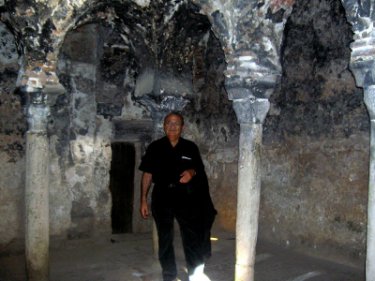 After travelling half an hour through wooded mountains and lush valleys, we reached the winery of Santa Catarina in the area of Andratx – located in one of the most beautiful valleys of northwest Mallorca. Nestled in the southern foothills of the Tramuntana Mountains, the winery, part of a larger company (Macia Batle), is a real paradise for those who love fine wine.
After travelling half an hour through wooded mountains and lush valleys, we reached the winery of Santa Catarina in the area of Andratx – located in one of the most beautiful valleys of northwest Mallorca. Nestled in the southern foothills of the Tramuntana Mountains, the winery, part of a larger company (Macia Batle), is a real paradise for those who love fine wine.
Wine production has been known for hundreds of years in Mallorca. The Romans introduced the making of wine and this continued to some extent in the Moorish era. However, with the Catalan conquest of 1229, vine cultivation greatly increased and has continued until our times. There are 66 wineries on the island and 25% and the finest of their [of their] production is exported, mostly to Germany.
The Swedish multi-millionaire Stellan Lundquist purchased the Bodega Santa Catarina in 1985 and the planting of French grape varieties such Cabernet Sauvignon, Merlot and Chardonnay began at about the same time. Today the Bodega produces about half a million bottles per year of some of the best wines on Mallorca.. These are allowed to mature in oak barrels placed in sandstone caves dug into the mountains. Rich, smooth and satisfying, Santa Catarina wines have become known far beyond the Balearic Islands.
Lena-Luiza Hertle, Export Manager, related to us the history of the winery then set up a table for us with wines of the house and the cheeses of the Balearic Islands. Charming and pleasant she must have opened for us a half dozen bottles of some of the best wines that I have ever tasted. When I remarked how smooth were her wines, she smilingly asserted: “Our wines have to be excellent in order to compete in a saturated wine market.” Excellent they were! Leaving the pleasant episode at the winery behind we drove past Claudia Schiffer’s new luxury summer home perched on a hilltop in Camp de Mar to the five-star Mardavall Hotel a member of the Starwood Luxury abodes and containing every conceivable amenity. Overlooking the Mediterranean Sea and edging Puerto Portals yacht harbour, it is built in regional style and offers a world of luxury to its customers. Just a few minutes from the exclusive Marina Harbour, the hotel includes the first Thalasso Spa and Wellness Centre in the Balearic Islands.
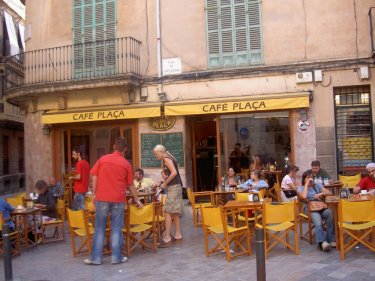 We enjoyed a scrumptious lunch in Mardavall’s Es Fum fine dining restaurant; relaxed around its indoor and outdoor pools; and enjoyed seductive views of the glittering sea from one of its spacious terraces then toured the house of luxury. Going through the smoking room one of our group remarked, ‘It’s so lush it will make people want to smoke.’
We enjoyed a scrumptious lunch in Mardavall’s Es Fum fine dining restaurant; relaxed around its indoor and outdoor pools; and enjoyed seductive views of the glittering sea from one of its spacious terraces then toured the house of luxury. Going through the smoking room one of our group remarked, ‘It’s so lush it will make people want to smoke.’
Departing we went for a stroll through the celebrated next door Puerto Portals yacht harbour, one of the most prestigious yacht marinas in Europe, before beginning our return journey. In less than 20 minutes we were back in Palma’s old Arab Quarter. Like most tourists we began our exploration at the Sa Seu Cathedral, constructed on the site of a former mosque which itself was erected on the remains of a Roman temple. Considered to be one of the worlds finest and largest Gothic structures, the Cathedral incorporates in its bell-tower the minaret of the former mosque.
Edging the Cathedral, we rested a while in Parc de la Mar with its impressive fountains and sculptures admiring the next-door Almudaina Palace, once the seat of the Moorish rulers and located next door to the Cathedral. With its walls rising proudly above the defensive ramparts of the medieval quarter, this splendid palace/fortress, which still contains a small Arab bath, offers a panoramic view of Palma’s harbour. In the Middle Ages it was used as a Royal Palace and today it is the official residence of the King of Spain when he visits Palma. It is also the home of the Museum of National Heritage and houses the Harbour Office of the Balearic Islands.
A five-minute walk from the Almudaina we reached the Arab Baths, hidden away on a tiny street. Dating from the 10th century and surrounded by well-tended gardens, they are the only complete structure remaining from Arab times and believed to have been part of a nobleman’s house.
After the Christians invaded and conquered Mallorca, they obliterated almost every possible sign of Arab/Muslim architecture and settlement. The Baths remain the last testimony of the more than 300 years of Arab/Muslim presence on the island. They are popular with visitors and continue to generate much historic interest.
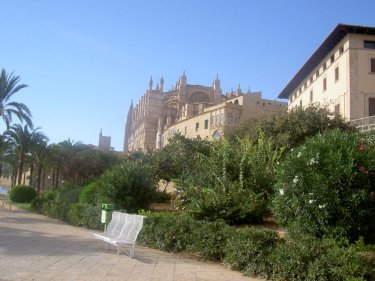 After visiting the old city’s most important monuments we continued our meandering in the former Arab Quarter. It seemed that around every corner there was some reminder of the Moorish or Medieval eras. We sampled food in tapa bars, rested in tiny plazas and talked about Palma’s history. In every conversation Nicole would always end up talking about the art galleries in Mallorca. As we walked along after the tour, Nicole explained, “Here in Palma we love art. Our city has per capita more art galleries than any place else in the world.”
After visiting the old city’s most important monuments we continued our meandering in the former Arab Quarter. It seemed that around every corner there was some reminder of the Moorish or Medieval eras. We sampled food in tapa bars, rested in tiny plazas and talked about Palma’s history. In every conversation Nicole would always end up talking about the art galleries in Mallorca. As we walked along after the tour, Nicole explained, “Here in Palma we love art. Our city has per capita more art galleries than any place else in the world.”
Like the writer who wrote after exploring the old city, ‘The Arab Quarter is stylish, sophisticated, intimate and exudes subtle Moorish influences yet bursting with life’, we had an exciting and fulfilling day rambling through this venerable Quarter. Of the 11 to 12 million tourists who travel annually to the Balearic Islands, some 10 million of these pass through Palma making it the most popular tourist destination in Europe.
Palma remains today an attractive and prosperous city as it was in the days of the Moors. Jaime I, the conqueror of the city, described it as ‘the most beautiful city that he had ever seen’ and to many of its inhabitants it remains so today. In the words of an acquaintance in the city, “I love my city. It’s beautiful! It’s the best place in Spain to live!”

IF YOU GO
Facts about Palma:
1)Buses leave Palma’s airport every 15 minutes for the city centre (Plaza Espana), Also taxi service is excellent.
2)Palma has no beaches in the city. The nearest beaches are Cann Pastills to the east and Cala Mayor to the west – both about 4 km (2.5 mi) away. The best beaches are Magalluf and Palma Vova to the west of the island and Alcudia on the north coast.
3)Pearls are the gifts to buy while visiting Palma. Mallorquin pearls, manufactured in the town of Manacor, are world famous.
4)The favourite Mallorquin sweet is ensaimada – a spiral-shaped bun and sobrassada is the Islands’ most famous sausage.
5)Leaving a small tip is customary – in bars, restaurants and hotels, from 5-10% of the cost of food or drink.
6)Palma has 17 art galleries mostly in the old town.
 Where To Stay:
Where To Stay:
There are over a thousand hotels in Mallorca catering to all tastes. One of the top hotels in Palma to stay is Castillo Son Vida, situated in a castle of medieval origin, surrounded by 500 hectares of subtropical parkland and with magnificent views of the bay of Palma, the hotel is a 5-star top luxury abode. 07013 Palma de Mallorca, Spain. Tel: 34 971 790 000. Fax: 34 971 790 017.
The Mardavall Hotel & Spa is located 24 km (13 mi) from Son San Juan – Mallorca’s International Airport. Passeig CalviB, s/n, E-07181 Costa doen Blanes – CalviB, Palma de Mallorca, Spain. Tel: ++34.971.629.629. Fax: ++34.971.606.168.
For Further Information About, Contact:
Check Website: Web http://www.illesbalears.es
or e-mail: oit@conselldemallorca.net
or,
The Spanish Tourist Office, 666 Fifth Ave. 35th, New York, N.Y. 10103, U.S.A. Tel: 212/265-8822. Fax: 265-8864. E-mail: oetny@tourspain.es
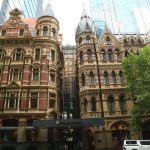
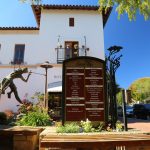
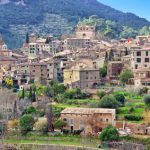

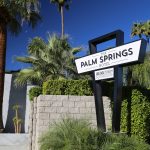
Leave a Reply